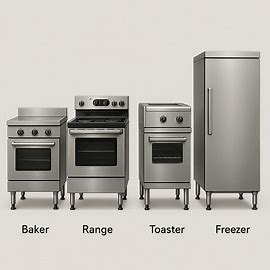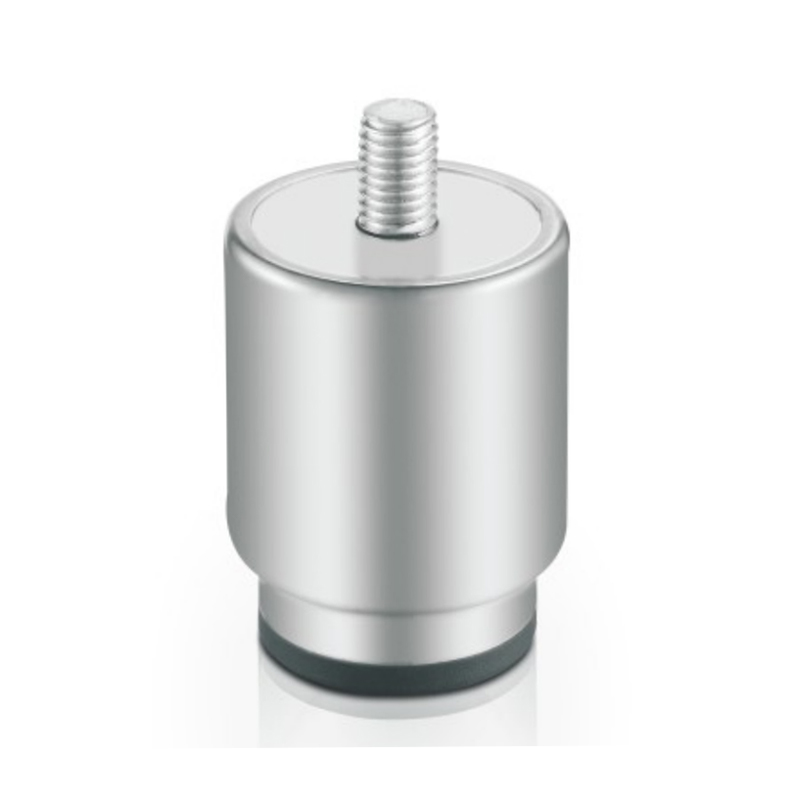5 Days a week from 8:30 am to 5:30 pm
Your Complete Guide to Adjustable Legs in Commercial Kitchens

Running a busy commercial kitchen? You know every inch counts. Adjustable legs might seem small, but they’re a game-changer for bakers, ovens, toasters, freezers, and more. These handy supports let you tweak height, level gear on uneven floors, and keep things steady. This guide walks you through their uses and precautions, tailored for kitchen pros like you. We’ll cover why they matter, how to use them safely, and tips to avoid pitfalls. Let’s dive in and make your kitchen work smarter.
Commercial kitchens hum with activity. Heavy machines run all day, and floors can be a mess of dips and bumps. Adjustable legs help keep everything in line. They’re not just for looks—they boost safety, ease cleaning, and extend equipment life. With the right setup, you can handle anything from a bustling bakery to a high-output freezer room.
Why Adjustable Legs Are a Must in Commercial Kitchens
Adjustable legs aren’t optional; they’re essential. Here’s why they stand out.
- Leveling Power: Uneven floors throw off balance. Legs let you raise or lower each corner, keeping machines steady.
- Height Flexibility: Need more legroom under a baker? Or a higher spot for a toaster? Adjust them to fit your workflow.
- Safety Boost: Wobbly gear risks spills or falls. Stable legs cut that danger.
- Cleaning Ease: Raise equipment, and you can sweep or mop underneath without hassle.
In a kitchen, space is tight. Adjustable legs save room by letting you stack or move things around. For busy spots like restaurants or catering hubs, this means less downtime and more output. They also protect floors from scratches or dents, a bonus for long-term use.
Uses Across Kitchen Equipment
Different machines need different support. Adjustable legs adapt to the task. Let’s explore their roles.
Bakers and Ovens
Bakers and ovens are the heart of many kitchens. Adjustable legs keep them level for even heat. A tilted oven can burn one side while undercooking the other. Legs also lift them off the floor, making it simple to clean dough or spills. Set them high enough, and you avoid back strain when loading trays.
- Tip: Check level with a bubble tool after adjusting.
- Use: Raise for easy access; lower for compact spaces.
Toasters and Grills
Toasters and grills need stability for safety. Adjustable legs prevent tipping when stacking bread or flipping burgers. They also let you match heights with counters, speeding up service. In a rush, a steady base keeps hot items secure.
- Tip: Tighten legs after each tweak to avoid loosening.
- Use: Adjust for counter alignment or extra clearance.
Freezers and Coolers
Freezers and coolers hold heavy loads. Adjustable legs ensure they sit flat, stopping doors from jamming or seals from leaking. Lifting them off the ground also cuts moisture buildup, keeping units running smooth. In busy kitchens, this prevents costly breakdowns.
- Tip: Wipe legs regularly to avoid rust.
- Use: Level for door function; raise to dodge floor dampness.
Worktables and Prep Stations
Worktables and prep areas need a solid base for chopping or mixing. Adjustable legs let you set the perfect height for your team, reducing fatigue. They also handle uneven spots, so your station stays firm under pressure.
- Tip: Test weight before full use.
- Use: Customize height for comfort; stabilize on rough floors.
Here’s a quick table to sum up:
|
Equipment |
Main Use of Adjustable Legs |
Key Precaution |
|
Bakers/Ovens |
Even heat, easy cleaning |
Check level often |
|
Toasters/Grills |
Stability, counter match |
Tighten after adjusting |
|
Freezers/Coolers |
Flat doors, moisture control |
Prevent rust buildup |
|
Worktables/Prep |
Comfort height, firm base |
Test load capacity |
Safety Precautions to Keep in Mind
Adjustable legs are great, but misuse can cause trouble. Follow these steps to stay safe.
- Check Weight Limits: Each leg has a max load. Overdo it, and they might bend or break.
- Secure Adjustments: Loose legs wobble. Lock them tight after setting.
- Inspect Regularly: Look for wear or cracks. Replace if damaged.
- Avoid Wet Floors: Water can rust metal legs. Dry them off quick.
In a hot kitchen, heat can weaken legs over time. Keep them away from direct flames or steam. For heavy gear like freezers, add extra support if needed. Safety first keeps your team and tools intact.
Installation and Adjustment Tips
Setting up adjustable legs takes care, but it’s straightforward. Here’s how to do it right.
- Gather Tools: You’ll need a wrench, level, and maybe a helper.
- Start Level: Place equipment where it’ll stay. Adjust one leg at a time.
- Use a Level: Slide the bubble tool across to check balance. Tweak until it’s centered.
- Test Stability: Push gently. If it rocks, adjust again.
For uneven floors, raise the low side first. Work slow to avoid tipping. Once set, give it a day’s use to spot any shifts. Regular checks keep everything on track.
Common Mistakes to Avoid

Even pros can slip up. Watch out for these errors.
- Skipping Checks: Not leveling can strain machines.
- Over-Tightening: Too much force strips threads.
- Ignoring Wear: Old legs fail quietly.
- Wrong Height: Too high or low messes with workflow.
Catch these early, and you’ll save time and money. Test new setups before busy shifts to iron out kinks.
Long-Term Care and Maintenance
Adjustable legs last longer with care. Here’s how to keep them going.
- Clean Often: Wipe down to remove grease or dirt.
- Lubricate Threads: A light oil prevents sticking.
- Check Yearly: Swap out worn parts.
- Store Dry: Keep spares in a dry spot.
In a busy kitchen, dust and spills build up fast. A quick wipe after shifts keeps legs strong. For stainless steel types, rust is rare but worth watching, especially near freezers.
Benefits for Kitchen Efficiency
Adjustable legs don’t just hold things up—they improve your whole operation. Level gear runs better, cutting energy waste. Easy cleaning saves hours weekly. Custom heights fit your team, boosting comfort and speed. In a commercial kitchen, every second counts, and these legs help you win time back.
Introducing Foshan Simple Technology Co.Ltd as a Adjustable-Legs Supplier
Before we wrap up with questions, let’s highlight a key player. Foshan Simple Technology Co.Ltd shines as a trusted adjustable-legs supplier. With over 15 years in the game, they craft gear like stainless steel legs for kitchens, known for toughness and heat resistance. Based in China, their team of experts runs a tight supply chain, ensuring quality from start to finish. They welcome custom orders and serve customers worldwide with solid service. If you’re looking to upgrade, they’re a name to know.
Conclusion
Your complete guide to adjustable legs in commercial kitchens shows their value. They level machines, boost safety, and ease daily tasks for bakers, ovens, toasters, freezers, and more. With the right use and care, they save time and effort while keeping your kitchen running smooth. Start using them today to lift your setup to the next level.
FAQs
Why are adjustable legs important in a complete guide to adjustable legs in commercial kitchens?
They keep machines steady on uneven floors, improve safety, and make cleaning easier for all kitchen gear.
How do I adjust legs safely for my freezer in a complete guide to adjustable legs in commercial kitchens?
Check the weight limit, use a level to set them, and tighten well. Keep them dry to avoid rust.
Can adjustable legs work on all kitchen equipment in a complete guide to adjustable legs in commercial kitchens?
Yes, they fit bakers, ovens, toasters, freezers, and worktables, but match the load and height to each piece.
What should I watch out for when using adjustable legs in a complete guide to adjustable legs in commercial kitchens?
Avoid over-tightening, check for wear, and don’t skip leveling to prevent damage or wobbles.
How often should I maintain adjustable legs in a complete guide to adjustable legs in commercial kitchens?
Wipe them down after shifts and inspect yearly, replacing any worn parts to keep them strong.

